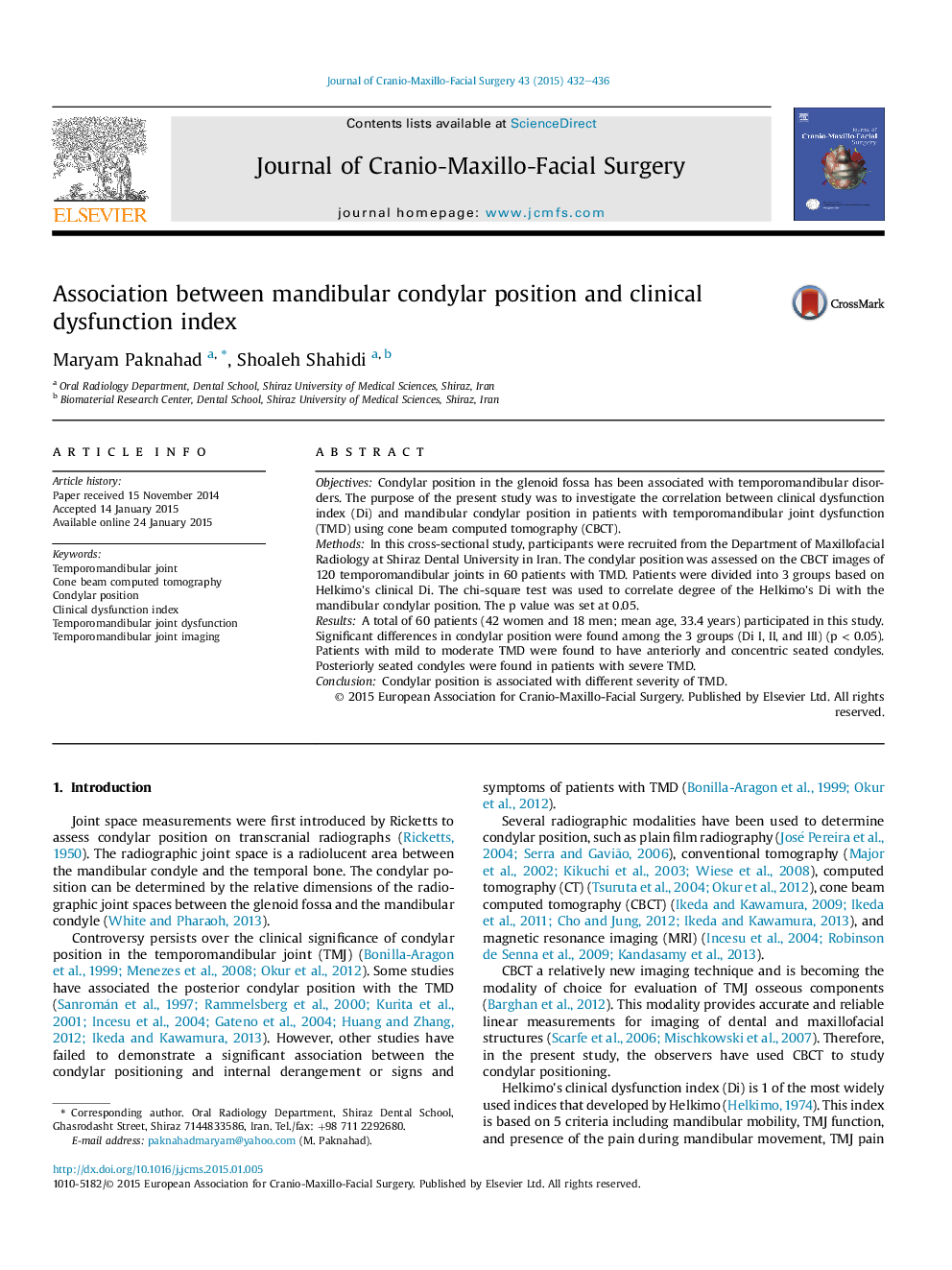| Article ID | Journal | Published Year | Pages | File Type |
|---|---|---|---|---|
| 3143174 | Journal of Cranio-Maxillofacial Surgery | 2015 | 5 Pages |
ObjectivesCondylar position in the glenoid fossa has been associated with temporomandibular disorders. The purpose of the present study was to investigate the correlation between clinical dysfunction index (Di) and mandibular condylar position in patients with temporomandibular joint dysfunction (TMD) using cone beam computed tomography (CBCT).MethodsIn this cross-sectional study, participants were recruited from the Department of Maxillofacial Radiology at Shiraz Dental University in Iran. The condylar position was assessed on the CBCT images of 120 temporomandibular joints in 60 patients with TMD. Patients were divided into 3 groups based on Helkimo's clinical Di. The chi-square test was used to correlate degree of the Helkimo's Di with the mandibular condylar position. The p value was set at 0.05.ResultsA total of 60 patients (42 women and 18 men; mean age, 33.4 years) participated in this study. Significant differences in condylar position were found among the 3 groups (Di I, II, and III) (p < 0.05). Patients with mild to moderate TMD were found to have anteriorly and concentric seated condyles. Posteriorly seated condyles were found in patients with severe TMD.ConclusionCondylar position is associated with different severity of TMD.
